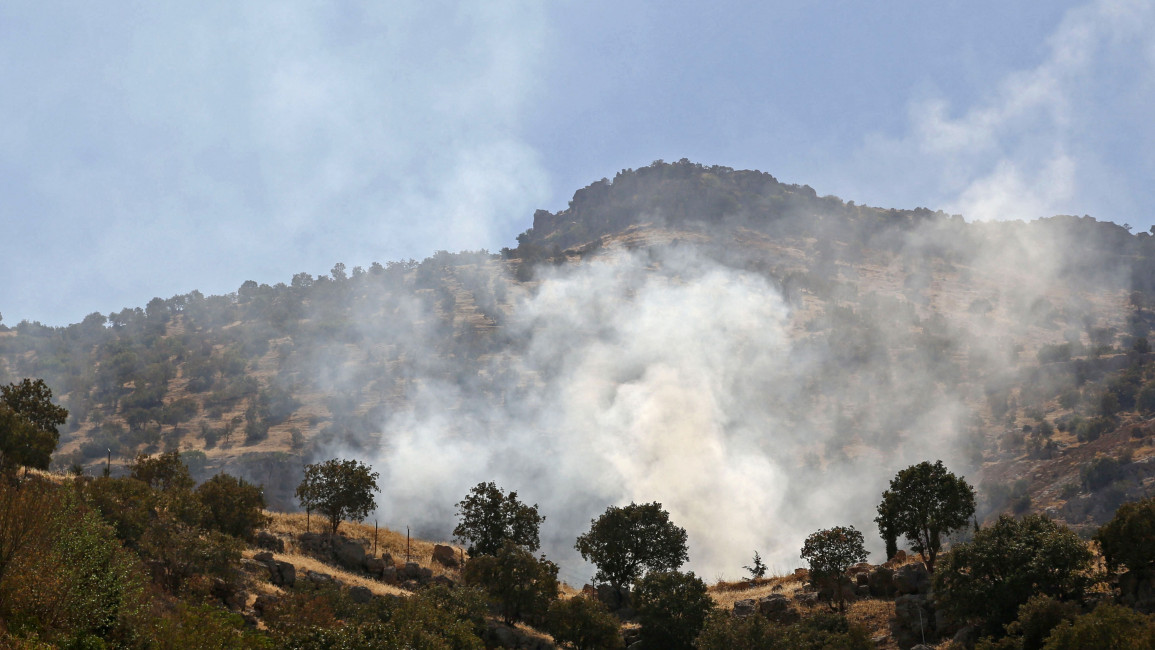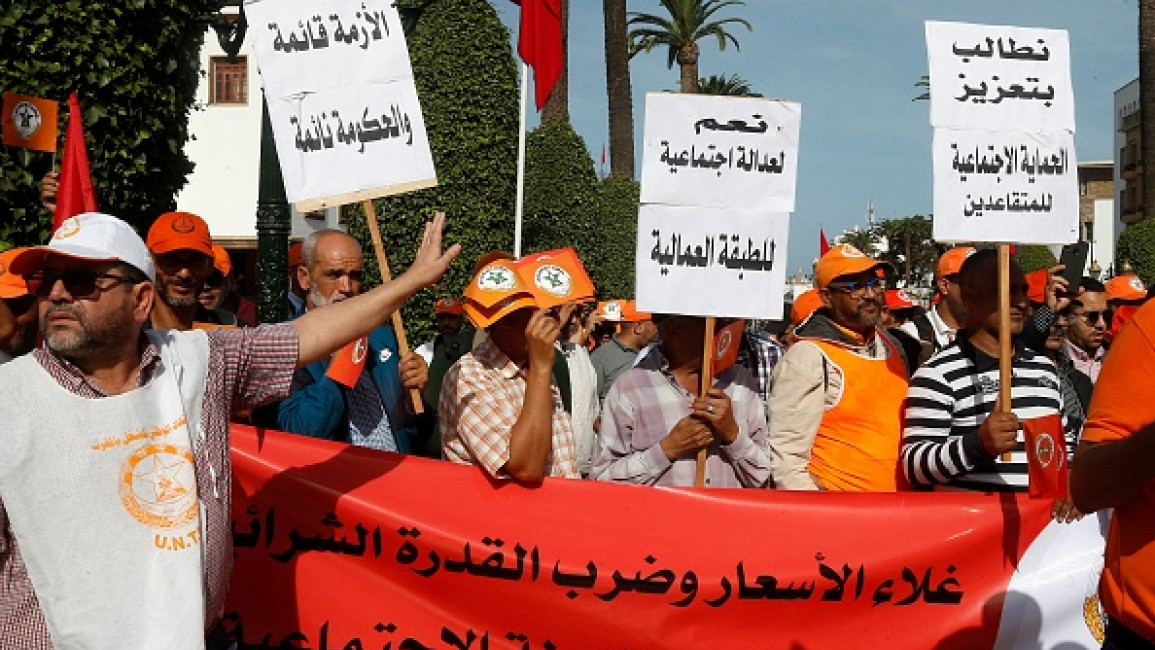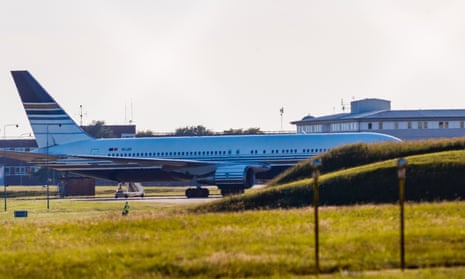
Analysis:
Iran has sought to blame external Kurdish groups for the wave of anti-government protests sweeping the country following the death of Jina Mahsa Amini.
Paul Iddon
18 October, 2022
Paul Iddon
18 October, 2022
Iran has threatened to launch a cross-border ground offensive into Iraqi Kurdistan against Iranian Kurdish opposition groups. The threats follow intensive artillery, drone, and missile strikes against these groups across the autonomous region.
On 8 October, Iran's Islamic Revolutionary Guard Corps (IRGC) declared that the "armored and special forces units of the Islamic Republic of Iran's armed forces are ready to be deployed to free this region (Iraqi Kurdistan) of these evils forever".
Earlier in October, a senior Iraqi Kurdish official told Voice of America that "Iran has gathered forces near Kurdistan Region and through a delegation of Iraqi military officials, sent a message to the Kurdistan Regional Government (KRG) that it may conduct a ground operation if forces of East Kurdistan (Iranian Kurdish fighters) do not evacuate the area".
"The Iranian regime has a vested interest to 'ethnicise' and 'securitise' the current events by portraying the unrest as having a secessionist character and driving a wedge between the Kurdish minority and broader Iranian society"
These threats are significant since they come in the wake of large-scale Iranian bombardments, the most serious being the 28 September attack that simultaneously struck targets belonging to the Kurdistan Democratic Party of Iran (KDPI), Kurdistan Freedom Party (PAK), and Komala in various parts of Iraqi Kurdistan.
The attacks killed 18 and injured at least 62, many of them civilians. They were the most significant Iranian attacks against Iraqi Kurdistan in years.
The deadly strikes coincided with the enormous demonstrations across Iran, ignited by the 16 September death of 22-year-old Iranian Kurdish woman Mahsa Amini, known as Jina Amini in Kurdish, in the custody of the country's so-called morality police. Tehran has sought to blame external Kurdish groups for this internal upheaval.
On 8 October, Iran's Islamic Revolutionary Guard Corps (IRGC) declared that the "armored and special forces units of the Islamic Republic of Iran's armed forces are ready to be deployed to free this region (Iraqi Kurdistan) of these evils forever".
Earlier in October, a senior Iraqi Kurdish official told Voice of America that "Iran has gathered forces near Kurdistan Region and through a delegation of Iraqi military officials, sent a message to the Kurdistan Regional Government (KRG) that it may conduct a ground operation if forces of East Kurdistan (Iranian Kurdish fighters) do not evacuate the area".
"The Iranian regime has a vested interest to 'ethnicise' and 'securitise' the current events by portraying the unrest as having a secessionist character and driving a wedge between the Kurdish minority and broader Iranian society"
These threats are significant since they come in the wake of large-scale Iranian bombardments, the most serious being the 28 September attack that simultaneously struck targets belonging to the Kurdistan Democratic Party of Iran (KDPI), Kurdistan Freedom Party (PAK), and Komala in various parts of Iraqi Kurdistan.
The attacks killed 18 and injured at least 62, many of them civilians. They were the most significant Iranian attacks against Iraqi Kurdistan in years.
The deadly strikes coincided with the enormous demonstrations across Iran, ignited by the 16 September death of 22-year-old Iranian Kurdish woman Mahsa Amini, known as Jina Amini in Kurdish, in the custody of the country's so-called morality police. Tehran has sought to blame external Kurdish groups for this internal upheaval.
RELATEDIn-depthAlessandra Bajec
"The IRGC and the Iranian regime at large have been adamant that Kurdish dissident groups based in Iraqi Kurdistan should be proclaimed as primary perpetrators in leading the country into chaos ever since the popular uprising began in Iran," Ceng Sagnic, Chief of Analysis of TAM-C Solutions, a multinational geopolitical intelligence and consultancy firm, told The New Arab.
"One could argue that the regime hopes to recondition public opinion on the protest movement by pointing the finger at Kurdish dissidents, disapproval of which is a common denominator for Iranians," he said.
"Airstrikes on KDPI positions last month did carry a similar message to Iranians while simultaneously delivering a threatening message to Kurdish groups," Sagnic added.
"Therefore, in my opinion, Iran's threats of cross-border operations against Kurdish groups serve the purpose and are serious threats."

The current protests in Iran mark the largest civil disobedience that the country has encountered since the early 1980s. [Getty]
Gunes Murat Tezcur, a professor at the University of Central Florida, where he holds the Jalal Talabani Endowed Chair, pointed out that even though most Iranian Kurds "feel double marginalised given the deprivation in their homelands as well as ethno-sectarian discrimination they experience," there is "no robust Kurdish insurgency confronting the Iranian regime".
Tezcur added that "the extant Kurdish parties are fragmented and lack strong military capacities".
One “partial exception” is the Kurdistan Free Life Party (PJAK), which is essentially the Iranian wing of the Kurdistan Workers' Party (PKK). PJAK also maintains a presence in Iraqi Kurdistan but doesn't seem to have been targeted by Iran's recent strikes.
The PKK is unlikely "to activate their forces given the complicated web of interests they share with Iran in northern Syria (Rojava)," Tezcur said.
"The [Iranian] regime hopes to recondition public opinion on the protest movement by pointing the finger at Kurdish dissidents"
"Given this situation, the Iranian regime has a vested interest to 'ethnicise' and 'securitise' the current events by portraying the unrest as having a secessionist character and driving a wedge between the Kurdish minority and broader Iranian society," he added.
"That explains its aggressive posture vis-a-vis Kurdish dissent groups based in Iraqi Kurdistan," Tezcur pointed out. He added that it is unlikely that the Iranian regime would undertake a major ground offensive, but that “the US backing of the KRG will be a balancing factor in this regard".
While Iran could pose a serious military threat to these groups in Iraqi Kurdistan, a ground offensive also risks backfiring and destabilising Iran's western Kurdish frontier region.
"Iran has the capability to launch a major, ground-based military operation into Iraqi Kurdistan, supported by helicopters, drones, and short and intermediate-range missiles," Nicholas Heras, Director of Strategy and Innovation at the New Lines Institute, told The New Arab.
Gunes Murat Tezcur, a professor at the University of Central Florida, where he holds the Jalal Talabani Endowed Chair, pointed out that even though most Iranian Kurds "feel double marginalised given the deprivation in their homelands as well as ethno-sectarian discrimination they experience," there is "no robust Kurdish insurgency confronting the Iranian regime".
Tezcur added that "the extant Kurdish parties are fragmented and lack strong military capacities".
One “partial exception” is the Kurdistan Free Life Party (PJAK), which is essentially the Iranian wing of the Kurdistan Workers' Party (PKK). PJAK also maintains a presence in Iraqi Kurdistan but doesn't seem to have been targeted by Iran's recent strikes.
The PKK is unlikely "to activate their forces given the complicated web of interests they share with Iran in northern Syria (Rojava)," Tezcur said.
"The [Iranian] regime hopes to recondition public opinion on the protest movement by pointing the finger at Kurdish dissidents"
"Given this situation, the Iranian regime has a vested interest to 'ethnicise' and 'securitise' the current events by portraying the unrest as having a secessionist character and driving a wedge between the Kurdish minority and broader Iranian society," he added.
"That explains its aggressive posture vis-a-vis Kurdish dissent groups based in Iraqi Kurdistan," Tezcur pointed out. He added that it is unlikely that the Iranian regime would undertake a major ground offensive, but that “the US backing of the KRG will be a balancing factor in this regard".
While Iran could pose a serious military threat to these groups in Iraqi Kurdistan, a ground offensive also risks backfiring and destabilising Iran's western Kurdish frontier region.
"Iran has the capability to launch a major, ground-based military operation into Iraqi Kurdistan, supported by helicopters, drones, and short and intermediate-range missiles," Nicholas Heras, Director of Strategy and Innovation at the New Lines Institute, told The New Arab.
RELATEDIn-depthSophia Akram
"What the Iranians cannot afford, and what is playing into Iran's calculations, is that military activities inside Iraqi Kurdistan could metastasise into an armed insurgency among the Kurds in Iran," he said.
"The Iranians are already on the edge of a potential armed uprising in the Kurdish areas inside their country, and there runs the risk of inspiring a multi-front conflict with an invasion of Iraqi Kurdistan," Heras added.
The Iranian leadership is feeling "totally besieged right now" and are "sort of pre-emptively lashing out in all directions, with the KRI (Kurdistan Region of Iraq) taking a particularly heavy beating," Alex Almeida, an Iraq security analyst at the energy consultancy Horizon Client Access, pointed out.
"A limited cross-border incursion penetrating into the KRI is certainly possible," Almeida told The New Arab. "I wouldn't expect heavy armoured forces to be involved - that would be too big of an escalation and the terrain in the area is totally unsuitable."

Smoke billows following an Iranian cross-border attack in the area of Zargwez, where several exiled left-wing Iranian Kurdish parties maintain offices, around 15 kilometres from the Iraqi city of Sulaimaniyah on 28 September 2022. [Getty]
Almeida does, however, believe Iran might use "heliborne special forces along with drone and helicopter strikes" against these groups.
"The Iranians could pattern their cross-border ground strike on the grounds ops Turkey has been running along their border with Kurdistan since 2015, which have been pushing deeper and deeper into the KRI," he said.
"It also wouldn't surprise me if the Iranians conduct additional deep strikes inside Kurdistan during the coming weeks - the recent set of strikes already hit three separate target complexes, including Koya with over seventy tactical ballistic missiles and long-range drones, already making this Iran's biggest cross-border strike since the 1990s," he added.
Iranian cross-border operations into Iraqi Kurdistan have remained relatively "limited in their geographical scope since the late 1990s" because "Tehran wisely decided to avoid potential unwanted encounters with the US or other Western forces," Sagnic pointed out.
"Turkey's ongoing border violations and the US' inaction in the face of attacks orchestrated by Iran deep in KRG territories are factors that could encourage Tehran to take such unprecedented and drastic action"
"That being said, playing a sensitive game of maintaining political influence in Iraq while conducting cross-border operations, Iran often refrained from severing relations with the KRG and Baghdad by keeping the scope of its operations limited," he said.
However, that could all change since the current protests mark the largest civil disobedience that Iran has encountered since the early 1980s.
"As drastic moments require drastic actions, Iran's possible cross-border incursions may manifest as unprecedented as the current uprising was," Sagnic said. "One should also note that Turkey's ongoing border violations and the US' inaction in the face of attacks orchestrated by Iran deep in KRG territories are factors that could encourage Tehran to take such unprecedented and drastic actions as it seeks a way out of this crisis."
Almeida does, however, believe Iran might use "heliborne special forces along with drone and helicopter strikes" against these groups.
"The Iranians could pattern their cross-border ground strike on the grounds ops Turkey has been running along their border with Kurdistan since 2015, which have been pushing deeper and deeper into the KRI," he said.
"It also wouldn't surprise me if the Iranians conduct additional deep strikes inside Kurdistan during the coming weeks - the recent set of strikes already hit three separate target complexes, including Koya with over seventy tactical ballistic missiles and long-range drones, already making this Iran's biggest cross-border strike since the 1990s," he added.
Iranian cross-border operations into Iraqi Kurdistan have remained relatively "limited in their geographical scope since the late 1990s" because "Tehran wisely decided to avoid potential unwanted encounters with the US or other Western forces," Sagnic pointed out.
"Turkey's ongoing border violations and the US' inaction in the face of attacks orchestrated by Iran deep in KRG territories are factors that could encourage Tehran to take such unprecedented and drastic action"
"That being said, playing a sensitive game of maintaining political influence in Iraq while conducting cross-border operations, Iran often refrained from severing relations with the KRG and Baghdad by keeping the scope of its operations limited," he said.
However, that could all change since the current protests mark the largest civil disobedience that Iran has encountered since the early 1980s.
"As drastic moments require drastic actions, Iran's possible cross-border incursions may manifest as unprecedented as the current uprising was," Sagnic said. "One should also note that Turkey's ongoing border violations and the US' inaction in the face of attacks orchestrated by Iran deep in KRG territories are factors that could encourage Tehran to take such unprecedented and drastic actions as it seeks a way out of this crisis."
RELATEDIn-depthRosie McCabe
Without US intervention, there is little any Iraqi party or armed force, including the KRG, could do so long as Iran still has the upper hand in Iraqi politics and security.
"Iran's possible cross-border incursions are likely to remain limited to the countryside and away from major cities in a similar fashion to Turkey's," Sagnic said. "The Iraqi Kurdish government and its components would avoid conflict with Iran as long as no direct threats are posed to Erbil, Sulaymaniyah or Dohuk," he added.
"In a doomsday scenario, Kurdish forces in Iraq should be expected to outsource encountering Iran to the US and Baghdad as it will be far beyond their military and diplomatic capabilities."
Paul Iddon is a freelance journalist based in Erbil, Iraqi Kurdistan, who writes about Middle East affairs.
Follow him on Twitter: @pauliddon









